

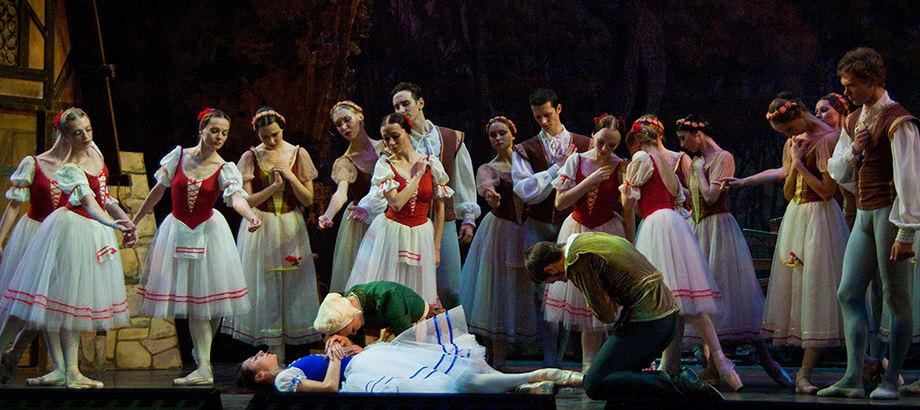

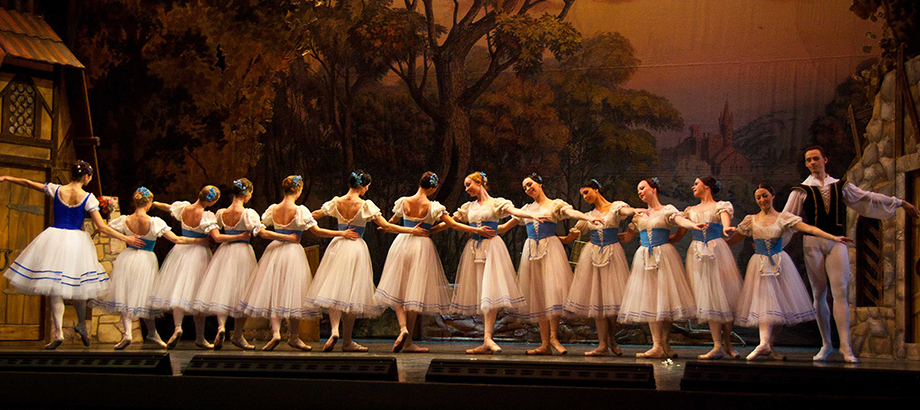
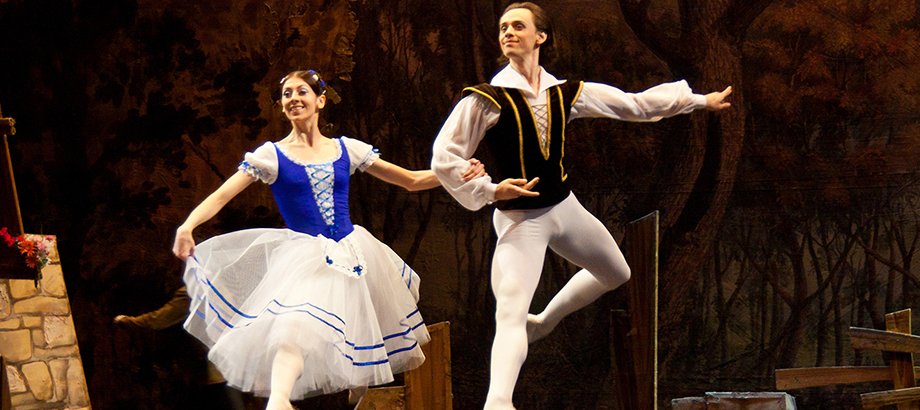
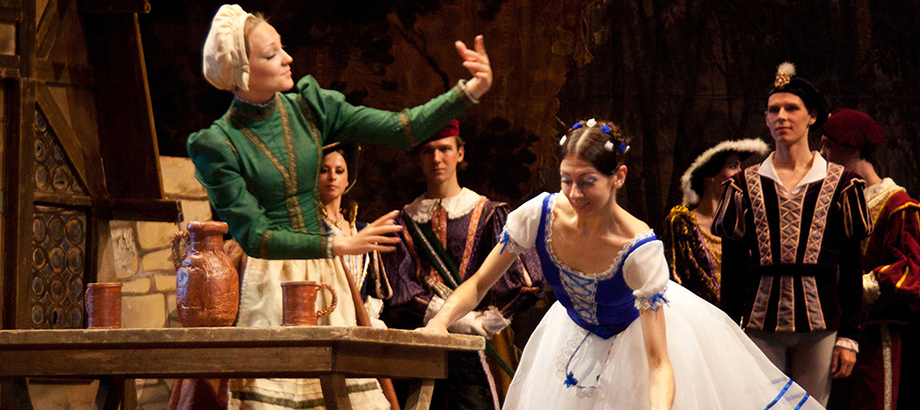
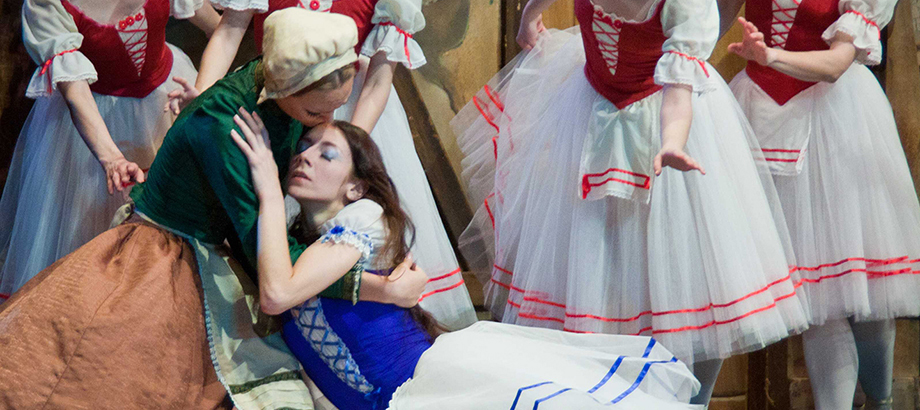
0+
- Ballet
Hermitage Theater / Main hall
Address: Russia, Saint-Petersburg, Dvortsovaya emb., 34
Duration: 02:00
Intermission: 1
Fantastic ballet in two acts
Created more than a century and a half ago, the ballet still arouses the interest of the viewer today due to the unique combination of a touching plot and the rare silent expressiveness of this choreographic masterpiece.
Giselle is the oldest ballet in the collection of the Hermitage Theatre. It opened the 1996 season, and the soloists of the Marinsky Theater, Margarita Kullik and Vladimir Kim, were involved in the main parts. At various times, Anastasia Volochkova, Yulia Makhalina, Valeria Vasilyeva, Natalia Potekhina, Irina Badaeva, Alyona Klochkova, Tatiana Tkachenko shone on the stage of the Hermitage Theater as Giselle; as Albert: Ilya Kuznetsov, Farukh Ruzimatov, Kirill Myasnikov, Dmitry Dmitriev, Oleg Kharyutkin, Feton Miozzi, Sergei Popov.
- Music:
- Adolf Adam
- Choreography:
- Jean Coralli
- Jules Perrot
- Marius Petipa
- Libretto:
- Jules-Henri Vernoy de Saint-Georges
- Théophile Gautier
- Jean Coralli Summary: ACT ONE Count Albert, in love with the peasant girl Giselle, hides his title. Giselle's other suitor, the forester Hans, tries to explain to her that Albert is not who he claims to be, but Giselle does not want to listen to him. Left alone, Hans enters the hunting lodge and steals Albert's sword with the count's coat of arms. The sound of the horn heralds the approach of hunters, among them the bride of Count Bathilde and her father. They stopped to rest in the village. The count's bride is fascinated by the spontaneity and beauty of Giselle and gives the girl an expensive chain. The hunters leave, and the peasants begin their holiday - harvest day. In the midst of the fun, Hans appears. He accuses Albert of lying and shows the count's sword as proof. Giselle does not want to believe. Then Hans blows his horn, and his bride appears before the embarrassed count. Giselle is desperate. Her mind is shattered. She is dying. ACT TWO Midnight. Hans came to Giselle's grave. The appearance of the jeeps frightens him. The jeeps rise from their graves and everyone who appears in the cemetery at this time is forced to dance until the person falls dead. Mirta summons the shadow of Giselle from the grave to take her into the round dance of the jeeps. Count Albert also comes to Giselle's grave. His grief and despair touch Giselle. She forgives Albert. Hans appears, surrounded by a round dance. The jeeps make him dance again and again and, swirling, throw him into the lake. The same fate awaits Albert. Mirtha tells him to dance. Giselle begs Mirta to let Albert go, but the villis is adamant. It's getting light. With the rising of the sun, the jeeps lose their strength. Albert is saved. Giselle says goodbye to her lover. And now forever. History World premiere: 28 June 1841, Theater de l'Academie Royal de Musique, Paris Premiere in St. Petersburg: December 18, 1842, Bolshoi (Stone) Theater On June 28, 1841, the premiere of the ballet "Giselle" by the French composer Adolphe-Charles Adam (1803-1856) took place on the stage of the Royal Academy of Music in Paris. Subsequently, in just two years, she went around almost all the ballet scenes in the world. And after the premiere, which took place on December 18, 1842 in St. Petersburg, the ballet was recognized as an outstanding achievement of the choreographic theater. The ballet was based on a poetic legend about jeep girls - brides deceived by their lovers and dying before the wedding. The French writer Théophile Gauthier got acquainted with this story in the retelling of the German romantic Heinrich Heine, and together with the experienced screenwriter Jules-Henri Vernoy de Saint-Georges, he created a libretto that tells the story of the love and death of a tender peasant woman, deceived by the windy Count Albert, but in the other world saving him from evil ghosts. The opposition of the world of harsh reality, where, due to class inequality, the love of heroes is impossible, and the ghostly world, in which human love is immortal and conquers death itself - this is what the essence of the ballet "Giselle" is and what so vividly reflects the main idea of the work, in which love has unfading power. "Giselle" favorably differed from other ballets of the Romantic era not only in its plot, where the first place was given not to an undine, sylph or other mysterious creature, but to a young girl, but also to the rich choreography of the ballet, saturated with both solo and ensemble dance. This is what led to an unprecedented interest in this ballet. One of the authors of the choreographic text, Jules Perrot, composed it for his wife - Carlotta Grisi - the first performer of the role of Giselle, a famous romantic ballerina. The plastic score of the ballet, perfect in all its smallest details, was distinguished by a combination of dance and pantomime, an effective and psychological pattern of duets, an airy character of movements, and the dance of the corps de ballet was inextricably linked with the dance of the heroine. "Giselle" brought Jules Perrot and Jean Coralli among the first choreographers in Europe and gave fame to the young Italian ballerina Carlotta Grisi. However, the triumph of the performance of the 1840s. was suddenly replaced by oblivion. Newspapers scolded "unnecessary rubbish". The audience was bored. The ballerinas avoided the "non-winning" party from their point of view. And in 1881, under the supervision of one of the authors - Jules Perrot, the brilliant choreographer, Marius Petipa, managed to breathe new life into the performance: he outlined the "romantic mess" of the corps de ballet with strict lines, put ghostly jeeps on pointe shoes, edited solo dances. The choreographer, carefully preserving the style of romantic ballet, cut it so convincingly that today Petipa is rightfully considered the third (after Coralli and Perro) author of the choreography of Giselle. Today it is no longer possible to separate Petipa's editing from previous productions. The 20th century gave the world three great Giselles: Anna Pavlova, Olga Spesivtseva, Galina Ulanova. Dancing Giselle for ballerinas has become no less honorable than for dramatic actors to play Hamlet. And after Vaslav Nezhinsky came out as Albert, the dancers began to fight for the right to perform in Giselle. The tradition of performing the part of Albert to this day is determined by the names of Boris Shavrov and Konstantin Sergeev. Giselle is the oldest ballet in the collection of the Hermitage Theatre. It opened the 1996 season, and the soloists of the Marinsky Theater, Margarita Kullik and Vladimir Kim, were involved in the main parts. At various times, Anastasia Volochkova, Yulia Makhalina, Valeria Vasilyeva, Natalia Potekhina, Irina Badaeva, Alyona Klochkova, Tatiana Tkachenko shone on the stage of the Hermitage Theater as Giselle; as Albert: Ilya Kuznetsov, Farukh Ruzimatov, Kirill Myasnikov, Dmitry Dmitriev, Oleg Kharyutkin, Feton Miozzi, Sergei Popov. Created more than a century and a half ago, the ballet still arouses the interest of the viewer today due to the unique combination of a touching plot and the rare silent expressiveness of this choreographic masterpiece.
- Children under 3 years old (inclusive) are admitted free of charge (without a ticket), provided that they do not occupy a separate seat. From 4 years old - you must buy a ticket at full price.
- Seating is free at events in the Hermitage Theatre.
- Tickets WITHOUT SERVICE FEE!
Schedule:
To view upcoming events, go to: Playbill and Tickets


